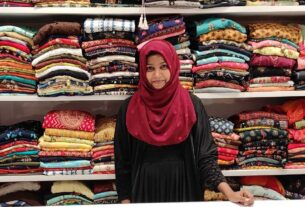While textile
minister Smriti Irani said that the total raw silk production had increased in
2018 as compared to 2017, the trade deficit for silk goods has increased in
2019.
Yashasvini Razdan
India is the second largest producer of silk and silk goods, yet the silk industry in India is experiencing a trade deficit with silk imports exceeding exports.
Dr. P. Kumaresan, scientist at the Statistical Section of the Central Silk Board attributed the declining exports to the excessive consumption of silk and silk-goods in the country. “We are not the largest exporters of silk because India is the largest consumer of silk and silk-goods. The deficit exists because we don’t have surplus to export. Instead we are importing heavily to meet the domestic demand.”
Exports of silk and silk-goods have declined by 9.036 per cent whereas the imports of the same have increased by 5.64 per cent for the period from April 2019 to October 2019 as compared to the same period for the previous year.
Data from the official website of the Central Silk Board shows that the earnings through the export of silk and silk-goods were Rs. 898.67 crore in 2019 as compared to Rs. 987.94 crore in 2018 for the period from April to October.
In contrast to this, the earnings through the imports have risen to Rs. 912.04 crore in 2019 from Rs. 863. 09 crore in 2018 for the period between April to October.
Mr. Kumaresan added, “In countries like Japan and China, silk is a large-scale industry but in India, sericulture is still a cottage industry. We use traditional methods to rear silkworms and obtain the silk fibres. Our products don’t fetch much value in the international markets.”
Bharat and his family rear silkworms in Devagere and sell the cocoons at a price of Rs. 250 per kg. A group of eight sits together in Bharat’s backyard and segregate the cocoons manually. “We don’t have any machinery for this work. The job has to be done by hand. The more people we have, the quicker the job gets done and we have more quantity to sell.”
While the cocoons fetch Rs. 250 per kg in the market, Mr. Shankar S. Kotrannavar, a textile engineer and Assistant Director (Inspection) at the Central Silk Board said, “the woven cloth material fetches around Rs. 3000 per kg.”
Dr. Kumaresan explained that 70 percent of the silk is woven in handlooms. “Very few people purchase the silk woven via handlooms. Most of them prefer cheaper silk which is woven in powerlooms,” he said.
He added that the imported silk is usually woven in powerlooms and is cheaper than the silk fabric woven in handlooms.
Mr. Nagavelu, owner of Pattusali Cotton and Silk Handloom Weavers said that the sale of silk products depends on the consumer’s budget and preference.
“One gram of silk fabric costs six rupees. A middle class buyer will usually buy a silk sari which costs around Rs. 2000 – Rs. 3000, which is woven in powerlooms. Some of them which are woven in handlooms, are not pure silk. The sarees which cost around Rs. 2 lakh are usually woven in handlooms are pure silk sarees. Such products are not bought everyday by regular buyers,” he added.
Mr. Kumaresan said that the trade deficit in the silk industry can be reduced by increasing the scale of production of silk and silk goods. “If we have better machinery and powerlooms, the production of silk will be more and our domestic product will also be cheaper,” he said.




